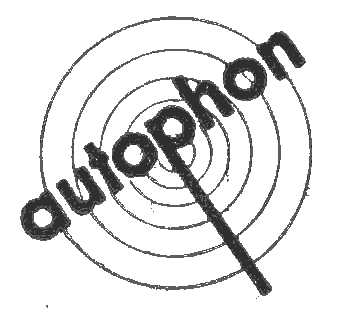

Autophon AG, Solothurn
Company history



|
Autophon AG, Solothurn
|

|
|
überarbeitet am 25.12.2011 |
Autophon A.G., Solothurn, has been founded as a "Special manufacturer for automatic telephone equipment" in 1922. One of the leading personalities was Mr Walter Hammer from Solothurn. Walter Hammer was born April 22nd 1893 in Berne, he went to Burgdorf School of Engineering and worked with Siemens in Berlin and their Swiss branch in Zurich. After WWI, Walter Hammer became head of the telephone department of the Hasler Company at Berne. He died March 23rd 1949 at Solothurn. The Autophon Company started with production of automatic telephones and automatic telephone exchanges, the production of the Army telephone 32 in it's wooden cabinet and the field telephones 41 and 47 in their leather bags have been the first contracts with the Swiss Army. Next was a contract for a Sound direction meter (SRI 37) to support aiming at adversary artillery posts. Shortly before outbreak of WWII, the French Army made an order for 100 SRI sets, which never was to be completed, as France was attacked by German Wehrmacht forces. During the time of the depression in 1931, Autophon
started production of A.F. wired broadcast receivers for the
Swiss network of wired broadcasting over telephone lines
(Telephonrundspruch) in 1931 and production of R.F. wired
broadcasting receivers and radios in 1932, which were the
first steps of the Autophon Company in designing R.F.
equipment. Autophon made te first steps in constructing transmitters
with the transmitter AS60 produced under licence by Telefunken
and with airborne wireless transceivers. In 1941/4 Autophon
developed the onboard two-way radio system AF105, which was
never built in large numbers, as there was no demand for
radio equipment for fighter airplanes after the end of World
War II. After WWII, the Swiss Army acquired a series of single
channel shortwave "walkie talkies" BC-611 from U.S. sources,
Autophon got a contract for licence production of the same
set with slight improvements, called
FOX and made an external antenna, a power meter
and a test set for it. Another legendary development from the Autophon company was the Barryvox set for protection in avalanche hazards: Normally, the small set is set to transmitting mode, when one starts for a ski tour on the mountains, when a member of a group or expedition has been submersed in snow by an avalanche, the set can be switched to direction finding reception mode. The VS68 avalanche rescue set has been developed for the Swiss Army was introduced in 1968 and has been in production until 1994. After 1952, Autophon did expand to foreign countries,
after 1967, Autophon had production and service facilities
as well as sales represants in France, Belgium, Italy
and Germany. In 1984, Autophon merged with Gfeller AG, Flamatt, to form the Autophon Holding AG. In 1987, the Autophon Holding AG (6'000 employees, 800 Mio sFr. in 1986), the Hasler Holding AG (6'800 employees, 880 Mio sFr. in 1986) and Zellweger Telecommunications AG (850 employees, 195 Mio sFr. in 1986) merged to form the ascom company, which is still in business in telecommunications technology today. further literature: © Martin Bösch, 26. Dez. 2011 |